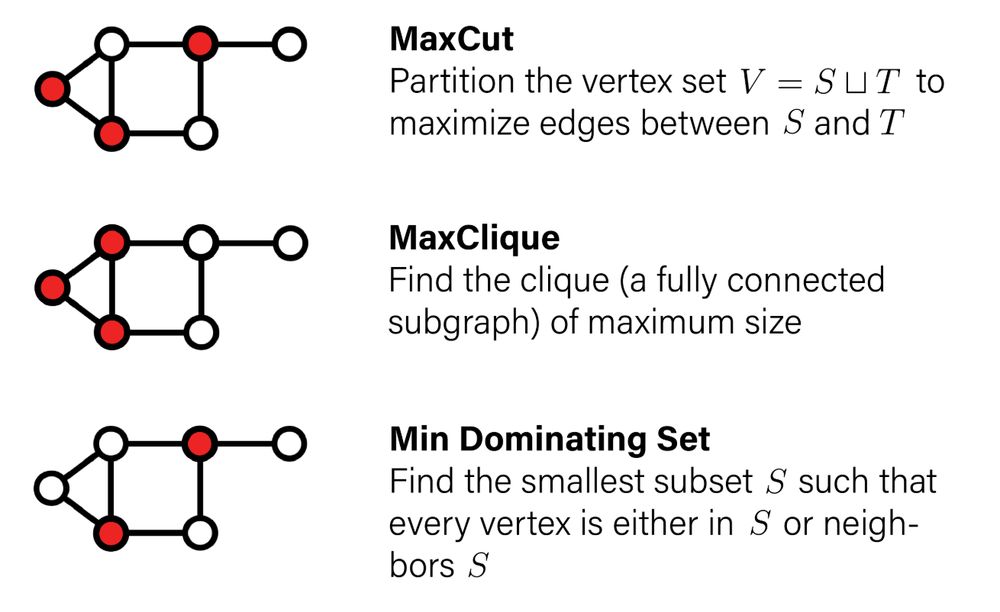🔹 GCON beats other GNNs & GFlowNet-based solvers
🔹 Outperforms (time-budgeted) Gurobi optimizer on Max Cut by 45+ edges!
🔹 Much faster inference than GFlowNet & Gurobi
GCON is both versatile & powerful. 🧵[9/n]


🔹 GCON beats other GNNs & GFlowNet-based solvers
🔹 Outperforms (time-budgeted) Gurobi optimizer on Max Cut by 45+ edges!
🔹 Much faster inference than GFlowNet & Gurobi
GCON is both versatile & powerful. 🧵[9/n]
p is then used for:
(a) Self-supervised loss computation
(b) Task-specific decoding to satisfy task constraints
🧵[8/n]

p is then used for:
(a) Self-supervised loss computation
(b) Task-specific decoding to satisfy task constraints
🧵[8/n]
[L]: High-frequency features capture the true clique.
[R]: Low-pass filters diffuse boundaries to nodes not part of the clique. 🧵[7/n]

[L]: High-frequency features capture the true clique.
[R]: Low-pass filters diffuse boundaries to nodes not part of the clique. 🧵[7/n]
We then apply GCON blocks with multi-scale filters derived from geometric scattering alongside conventional GNN aggregation for low-pass filtering
Why the multi-scale filters? 🧵[6/n]

We then apply GCON blocks with multi-scale filters derived from geometric scattering alongside conventional GNN aggregation for low-pass filtering
Why the multi-scale filters? 🧵[6/n]

We propose GCON, a novel GNN framework for tackling CO problems.
📜 arxiv.org/abs/2405.20543
🛠 github.com/WenkelF/copt
🧵[1/n]

We propose GCON, a novel GNN framework for tackling CO problems.
📜 arxiv.org/abs/2405.20543
🛠 github.com/WenkelF/copt
🧵[1/n]

